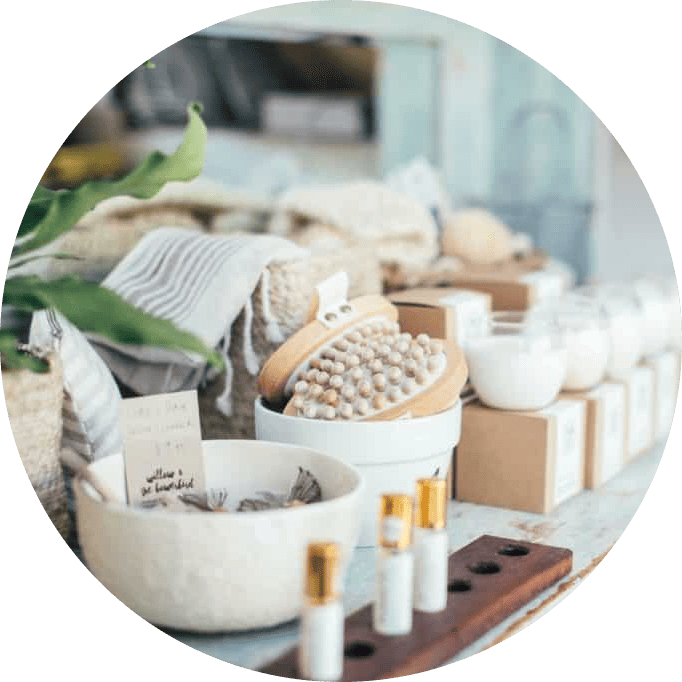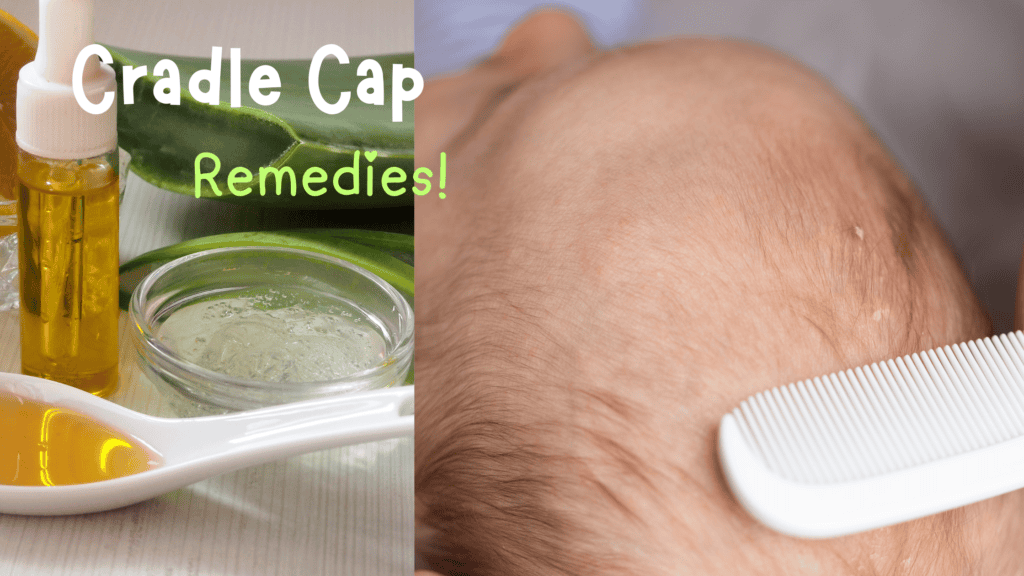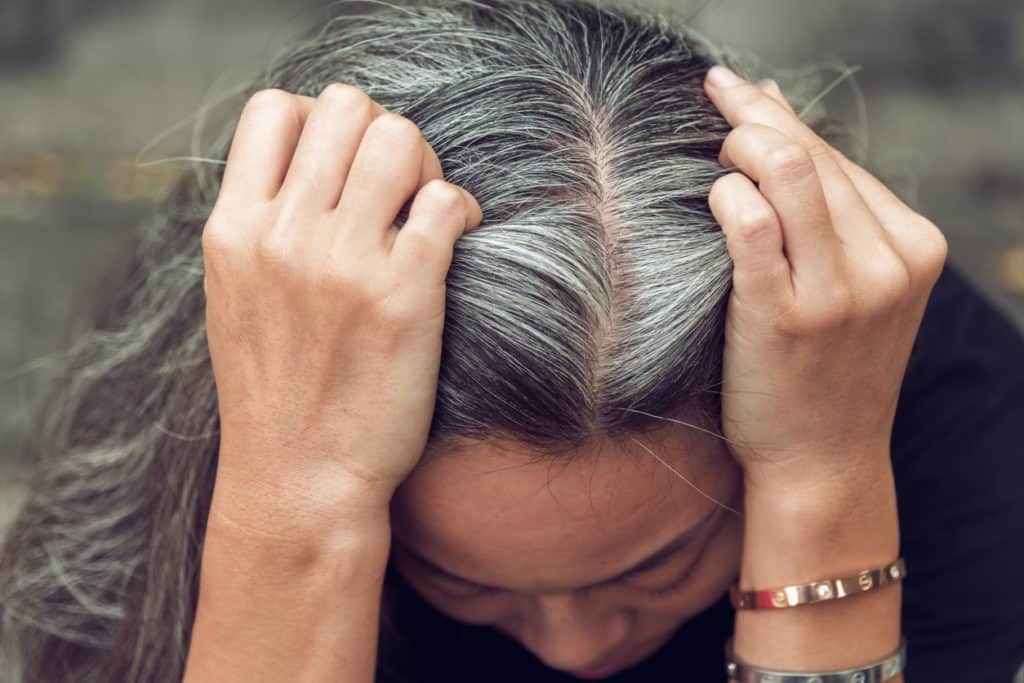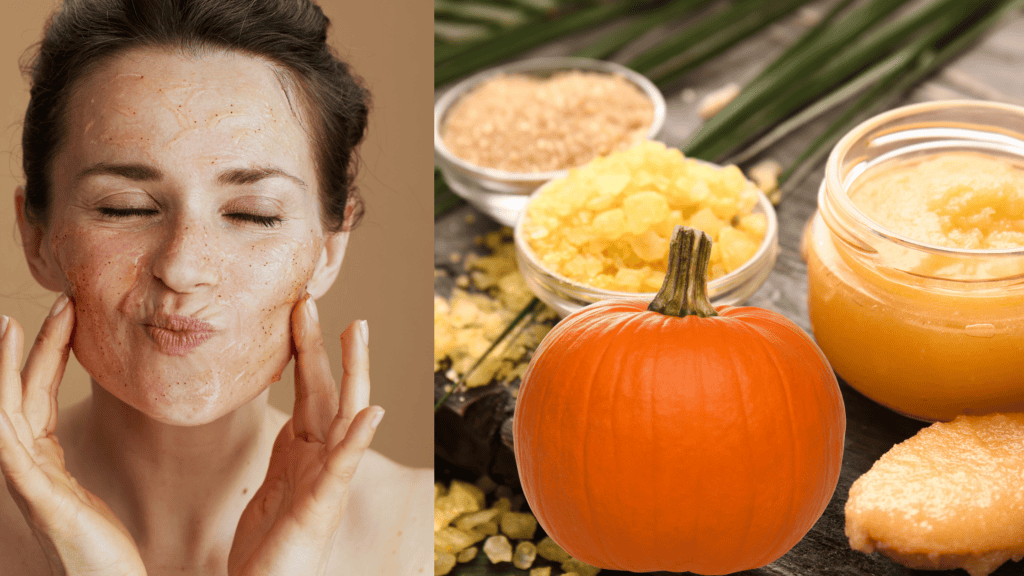If your baby constantly suffers from cradle cap, also known as infantile seborrheic dermatitis, a common skin condition that affects many newborns, try some simple DIY remedies that can go a long way in clearing up the rough, scaly patches on the scalp, which are often accompanied by redness and flakes.
While cradle cap is harmless and usually go away within a few weeks to months, the dry, crusty skin can look unsightly. However, with a few natural ingredients used regularly, you can get your little one’s scalp back to normal fairly quickly!
To prevent cradle cap, make sure your baby’s head is clean and dry, and use a gentle brush to loosen the scaly patches. Massage the scalp daily with natural plant carrier oils before washing.
Cradle cap greatly benefits from natural ingredients like baking soda, aloe vera, and honey, which are used to make hair masks and scrubs; their soothing, anti-inflammatory, and exfoliating properties help loosen and easily remove the dead skin on the scalp.
What is Cradle Cap in Infants?
Cradle cap is characterized by yellowish, greasy, and sometimes crusty patches on a baby’s scalp. It can also appear on the forehead, eyebrows, and behind the ears. Although the exact cause is unknown, it’s believed to be linked to overactive sebaceous glands, which produce too much oil, trapping dead skin cells.
While cradle cap is usually temporary, they can persist for longer and even be seen in toddlers or young children. If it continues to be a worry, visit a dermatologist, but using natural ingredients, mild, gentle shampoos, and hair products will be a big help!
DIY Recipes to Remove Cradle Cap.
Natural remedies can be gentle and effective in treating cradle cap. Here are a few DIY recipes you can try at home:
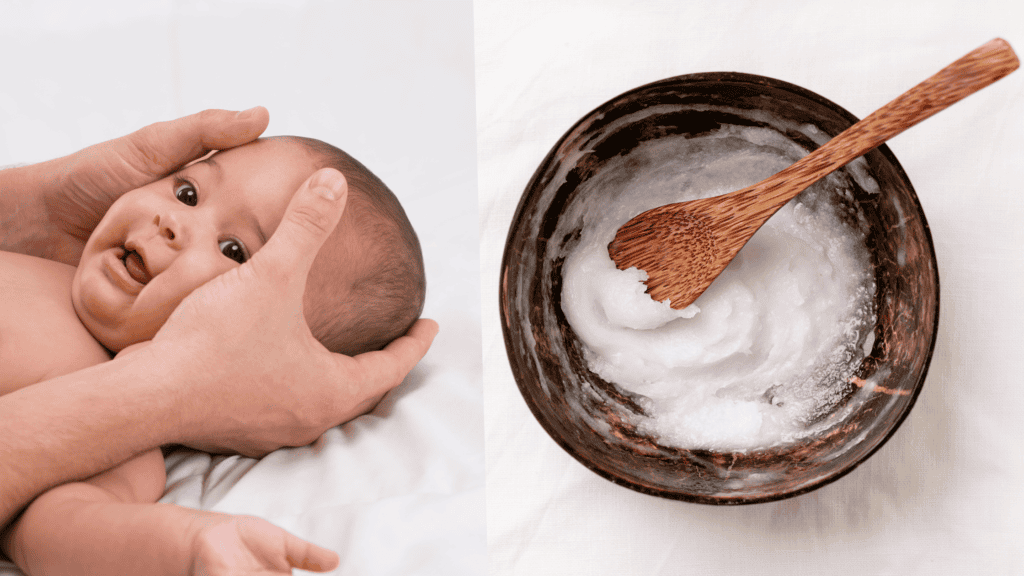
Coconut Oil Cradle Cap Treatment.
Ingredients:
Coconut oil is versatile and a must in any bathroom or kitchen. From oil pulling to skin and hair care, this multi-use oil, with anti-inflammatory properties, is fantastic for softening and moisturizing cradle cap.
Instructions:
- Warm a small amount of coconut oil in your hands.
- Gently massage the oil onto your baby’s scalp, focusing on the affected areas.
- Let the oil sit for 15-20 minutes to soften the scales.
- Use a soft-bristled baby brush* to remove the loosened flakes gently.
- Rinse the scalp with warm water and mild baby shampoo* to remove residue.
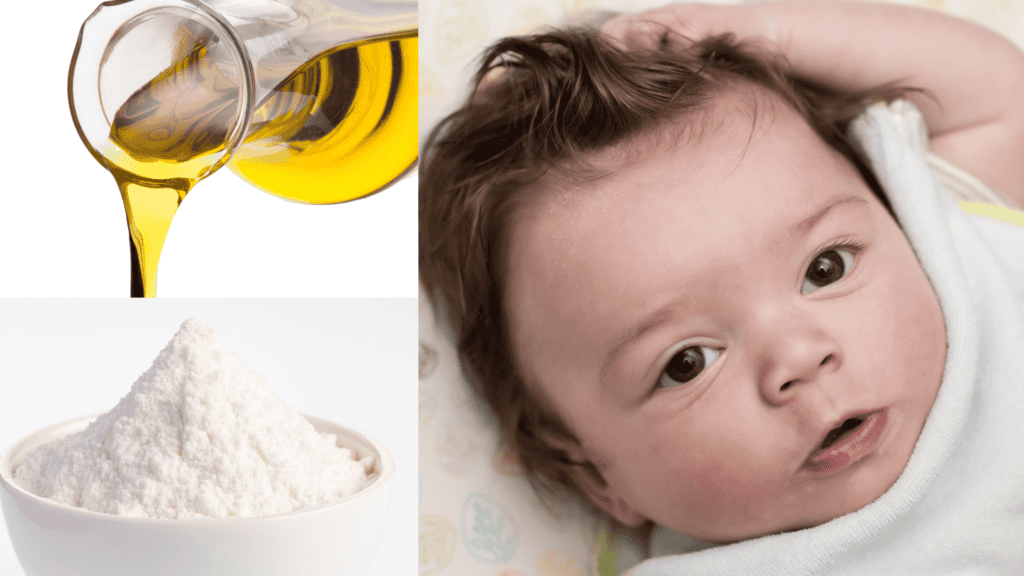
Olive Oil and Baking Soda Scrub Recipe for Cradle Cap!
Ingredients:
Olive oil has been used for centuries for hair care, and baking soda has exfoliating and cleansing properties and many beauty uses. Together, they make an effective cradle cap treatment!
Instructions:
- Mix 1-2 tablespoons of olive oil with a teaspoon baking soda to form a paste.
- Apply the paste to the affected areas and massage gently.
- Let it sit for about 15 minutes.
- Use a soft baby brush to exfoliate the scalp gently.
- Rinse thoroughly with warm water and baby shampoo.
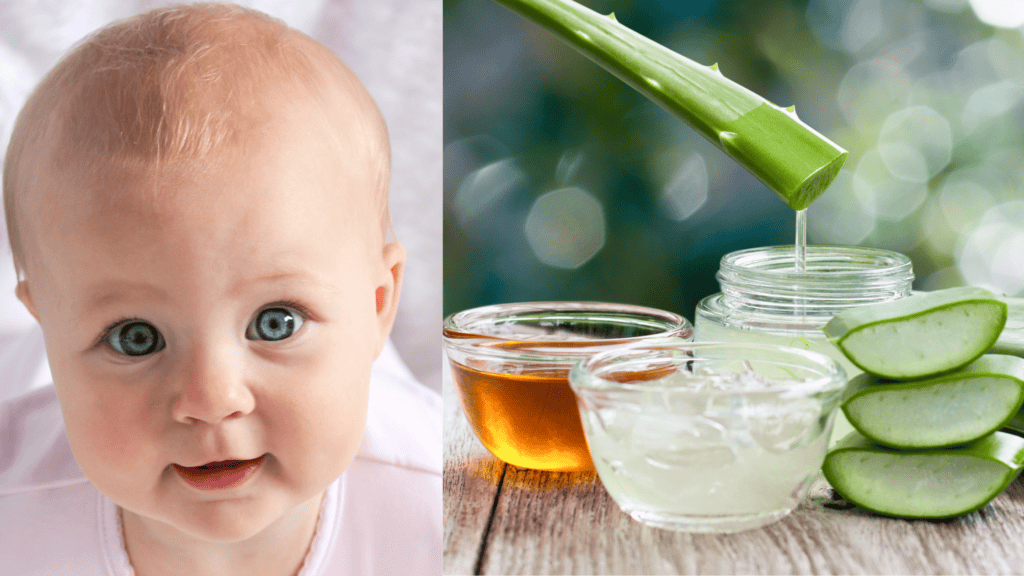
Aloe Vera and Honey Mask for Cradle Cap!
Ingredients:
Aloe vera has many hair and skin benefits; you can buy it or make it fresh, while raw honey has soothing, healing skincare properties!
Instructions:
- Mix equal parts of fresh aloe vera gel and raw honey.
- Apply the mixture to your baby’s scalp and leave it on for 20 minutes.
- Gently comb through the hair with a soft brush to remove scales.
- Rinse with warm water and a gentle baby shampoo.
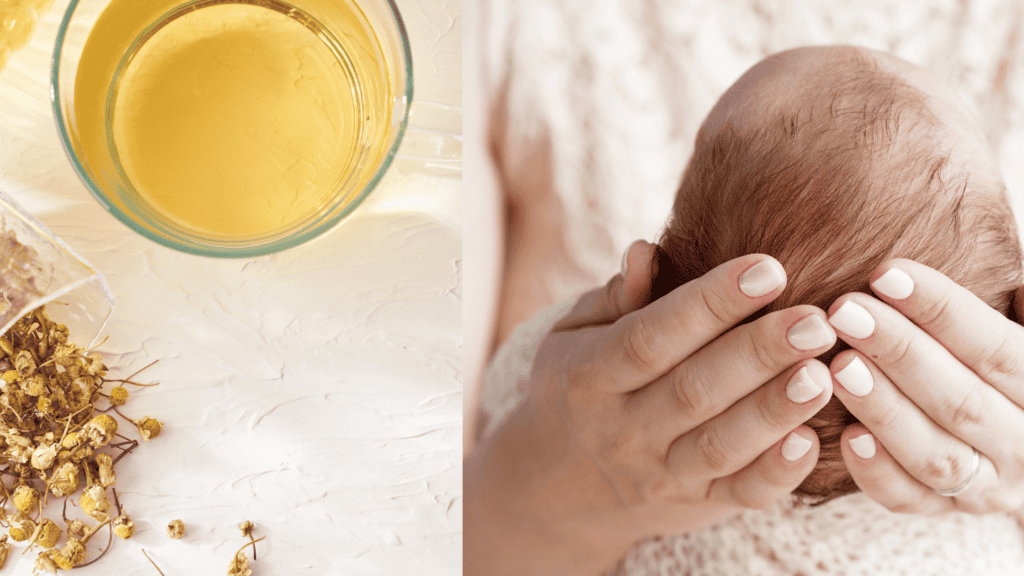
Chamomile Tea Rinse for Cradle Cap!
Ingredients:
- Chamomile tea bags*
- Water
Instructions:
- Brew a strong chamomile tea using 2-3 tea bags and let it cool to room temperature.
- After washing your baby’s hair, use the chamomile tea as a final rinse.
- Leave it on without rinsing off to benefit from the soothing properties of chamomile.
Tips for Preventing Cradle Cap
While it’s not always possible to prevent cradle cap, maintaining good scalp hygiene can help minimize its occurrence. Here are some tips:
- Regular Washing: Wash your baby’s scalp regularly with a mild, natural baby shampoo* to keep the scalp clean and free from excess oil.
- Gentle Brushing: Use a soft baby brush* to gently brush your baby’s scalp daily. This can help prevent the buildup of dead skin cells and oil.
- Hydration: Keep your baby well-hydrated. Sometimes, dry skin can contribute to the severity of cradle cap.
- Avoid Overheating: Dress your baby in breathable organic fabrics* and avoid overheating, as sweating can exacerbate the cradle cap.
When to See a Doctor for Cradle Cap?
Cradle caps are usually harmless and treatable at home. However, if you notice signs of infection (such as oozing, redness, or swelling) if the condition spreads to other parts of the body, or if it persists despite home treatments, consult your pediatrician for further advice.
Your baby’s scalp can return to its smooth, healthy state with patience and consistent care.
To keep the cradle cap at bay, moisturize your baby’s scalp daily with a few tiny drops of oil warmed in your hand. You can even buy* or make a DIY cradle cap oil blend that anyone with dry skin can use!
Glowitgreen.com uses affiliate links. If you purchase through these links, marked by a *, we may receive a small commission, which will not affect your sales.
All other links lead to related blog posts!
